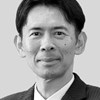To embed our video on your website copy and paste the code below:
<iframe src="https://www.youtube.com/embed/GzJ7IX5ty4c?modestbranding=1&rel=0" width="970" height="546" frameborder="0" scrolling="auto" allowfullscreen></iframe>
Panel Discussion
The drive for further efficiencies in the network continues and the focus now is firmly on the role that increased automation will play. Advancements in AI and ML are creating new opportunities for enhanced and deeper levels of network automation. But further developments are still needed, such as a unified approach to data collection and management along with improvements in energy efficiency. Meanwhile, adoption of disaggregation and open networking risks adding complexity. However, successful automation can lead to a more productive development environment, which will leverage cost savings into new digital service revenue generation.
Broadcast live 6 June 2024
Featuring:

CO-HOST
Diego R Lopez
Senior Technology Expert, Telefónica

Anita Döhler
CEO, NGMN Alliance

Darrell Jordan-Smith
Chief Revenue Officer, Wind River

Faiq Khan
SVP & Global Head - OSS Sales, Rakuten Symphony

Sadayuki Abeta
Chief Open RAN Strategist, NTT DOCOMO, Inc and CTO, OREX SAI

Vishal Mathur
Global Head of Engagement, Telecom Infra Project (TIP)




